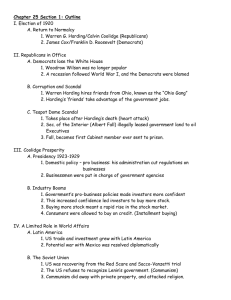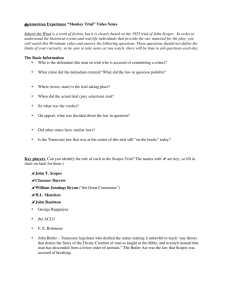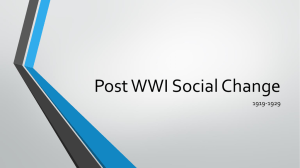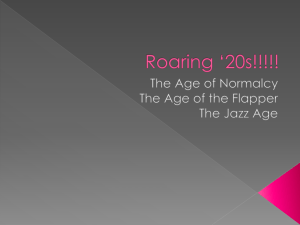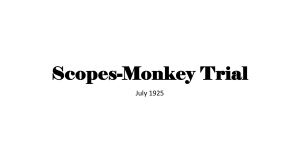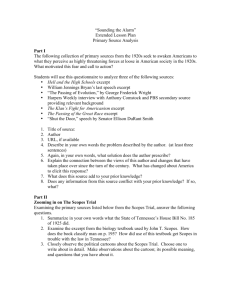1920s Major Events
advertisement
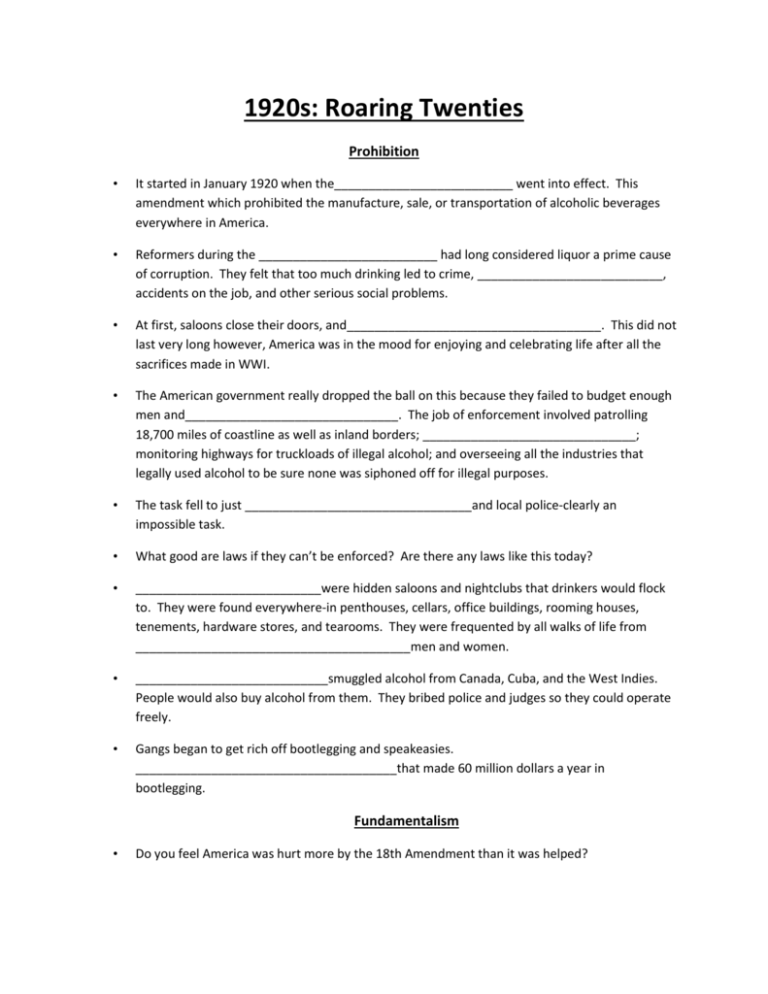
1920s: Roaring Twenties Prohibition • It started in January 1920 when the__________________________ went into effect. This amendment which prohibited the manufacture, sale, or transportation of alcoholic beverages everywhere in America. • Reformers during the __________________________ had long considered liquor a prime cause of corruption. They felt that too much drinking led to crime, ___________________________, accidents on the job, and other serious social problems. • At first, saloons close their doors, and_____________________________________. This did not last very long however, America was in the mood for enjoying and celebrating life after all the sacrifices made in WWI. • The American government really dropped the ball on this because they failed to budget enough men and_______________________________. The job of enforcement involved patrolling 18,700 miles of coastline as well as inland borders; _______________________________; monitoring highways for truckloads of illegal alcohol; and overseeing all the industries that legally used alcohol to be sure none was siphoned off for illegal purposes. • The task fell to just _________________________________and local police-clearly an impossible task. • What good are laws if they can’t be enforced? Are there any laws like this today? • ___________________________were hidden saloons and nightclubs that drinkers would flock to. They were found everywhere-in penthouses, cellars, office buildings, rooming houses, tenements, hardware stores, and tearooms. They were frequented by all walks of life from ________________________________________men and women. • ____________________________smuggled alcohol from Canada, Cuba, and the West Indies. People would also buy alcohol from them. They bribed police and judges so they could operate freely. • Gangs began to get rich off bootlegging and speakeasies. ______________________________________that made 60 million dollars a year in bootlegging. Fundamentalism • Do you feel America was hurt more by the 18th Amendment than it was helped? • A Protestant movement grounded in a literal, or non-symbolic, interpretation of the Bible. Many Protestants adapted America’s changing society with different religions and a growing trust in science; however the ______________________________________resisted this trend. • _________________________________________________that the life of plants and animals evolved over millions of years was is in direct conflict with the Bible’s story of creation. • The American Civil Liberties Union (ACLU) promised to defend any teacher who would challenge the law in Tennessee of the _________________________________in the classroom. It just took a thin, freckled faced teacher from small town Dayton, Tennessee (John T. Scopes) to take up the challenge and try to force change. • In March 1925 John T. Scopes read a passage from a biology text book about man coming from______________________________________. Scopes was promptly arrested, and his trial was set for July. • The ACLU hired________________________________, the most famous trial lawyer of the day. • ____________________________________________, a three-time Democratic Candidate for president and a devout fundamentalist, served as a special prosecutor. • The question is: Should religion influence what children are learning in the public education classroom? • Darrow corners Bryan (proclaimed expert of the Bible) on the witness stand with the question: “Do you think the earth was created in six days?” Bryan responds “Not six days of 24 hours.” • With this Bryan admitted that the _____________________________________________in different ways. • The court still found Scopes guilty and fined him $100. Later the Tennessee Supreme Court changed the verdict on a technicality. KKK • The _________________________________and anti-immigrant feelings, different groups of bigots used anticommunism to harass anyone unlike themselves. One such group was the KKK. • By 1924 _________________________“white male persons, native-born gentile citizens” who believed in keeping blacks “in their place,” destroying saloons, opposing unions, and driving Roman Catholics, Jews, and foreign-born people out of the country. It also opposed union organizers and helped enforce prohibition. • Klan members vented some of their frustrations through racial violence. They also tried to influence ____________________________________________________________.The Klan dominated state politics in Arkansas, California, Indiana, Ohio, Oklahoma, Oregon, and Texas. Women’s Roles • The flapper was the ideal new woman of the 1920s that embraced new fashion and________________________________________________________________________. • A _________________________________________existed for women which was a set of principles granting greater sexual freedom to men than to women-required women to observe stricter standards of behavior than did men. African Americans • The _________________________________________north for African Americans created new city areas dominated by black culture. One of these cities was __________________________. A literary and artistic movement celebrating African-American culture. • Marcus Garvey headed the ______________________________________________and he wanted Africans to separate themselves from whites and take pride in their culture. He encouraged black businesses, newspapers, and all black communities. He felt that Africans needed an independent nation and encouraged blacks to return to Africa. • Is Garvey’s message a form of racism?
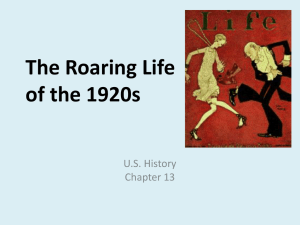
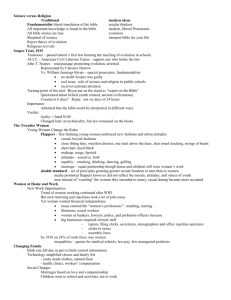
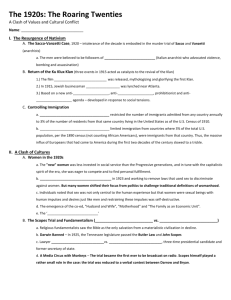

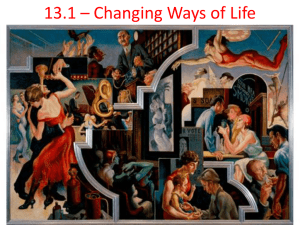
![Changes%20in%20American%20Society[1] - pams](http://s3.studylib.net/store/data/009097112_1-9a8e74b6b539401fd3776a36445a3f2f-300x300.png)
